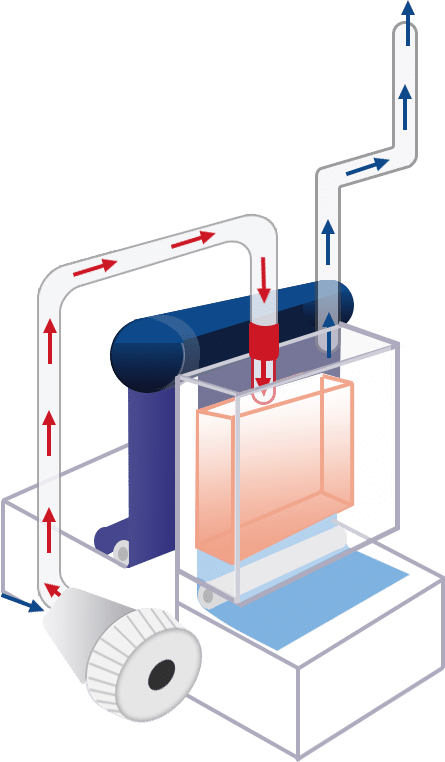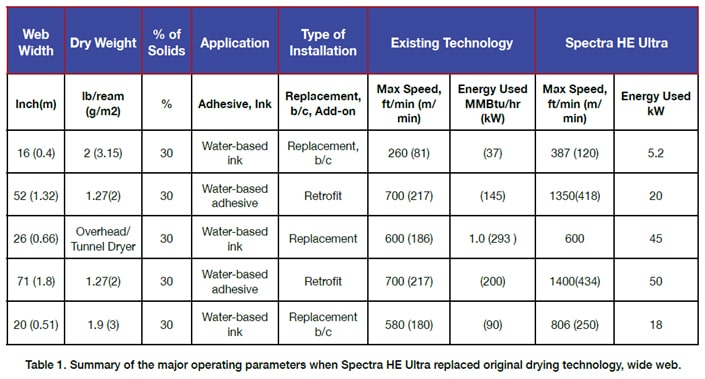



HTI’s patented acoustic drying process emphasizes “transfer” rather than “heat” in the removal of liquids (water or solvents) from nonwoven webs. Its original applications included drying of paper, carpets, textiles, web printing inks and functional coatings.
Introducing an ultrasonic vibration into an air stream provides greater moisture- defusing efficiency. This disruption of the boundary layer keeps a “skin” from forming during the drying or curing process. With the surface of the boundary layer in a state of excitation, water or solvent vapor can more readily pass out of the coating or wet medium.
This effect does not stop at the boundary level. The acoustic pressure waves propagate into wet coatings and substrates, or/and the material itself, creating micro channels and generating localized displacement of water molecules.

Conductive drying takes place only when two solid (one of the surfaces contains moisture) surfaces get in direct contact with each other. The hotter (drying) surface transfers heat to the wet surface, containing moisture. The transferred temperature energizes molecules of moisture by direct contact. This drying process depends on the thermal conductivity of both surfaces.
With Infrared (IR) or Near Infrared (NIR) drying methods, high temperature is needed to start exciting molecules of fluid (water or solvent). Temperature of the emitter and the distance from the emitter to the material being dried is key. Fire hazard, loss of structural stability of sensitive films and “skinning” is always a risk with this drying method. Again, energy is indirectly used to generate radiant heat from the IR emitter.
Convective (hot air) drying systems, in which the process takes place between the air and the material. It depends on the velocity and temperature of the air supplied to remove the moisture. Again, energy is used to heat the air. The non-oscillated (steady state) air is used to dry the sheet, web, film, or 3-dimensional object.
With Spectra HE™ Ultra acoustic drying technology, ultrasonic oscillating velocities of the air are 3-5 times more efficient than steady-state air velocity. This provides excellent micro-mechanical excitation of the molecules of moisture (water or solvent). The coefficients of heat and mass transfer are higher, which allows liquids to be removed naturally at accelerated rates.
With curing or cross-linking processes, heat is required to raise the temperature to conditions needed for chemical reaction.
With Spectra HE™ Ultra, only the ultrasonic air needs to be heated. Often the curing or cross-linking effect is achieved at a lower air temperature, a benefit of the more efficient drying.
Click here to read about our Spectra HE™ Ultra Test Stand. This allows HTI to offer a performance warranty on the HTI Spectra HETM Ultra system quoted for your application.
